Is Rio de Janeiro Safe to Visit? 10 Tips to Stay Safe
IS RIO A SAFE PLACE TO VISIT?
When it comes to planning a visit to the city of Rio de Janeiro, there’s one question that seems to pop up more often than not: is Rio de Janeiro safe? But this query prompts a larger consideration: is there any bustling metropolis in the world that can fully claim to be 100% safe?
Rio is home to over 6.7 million residents. It has more people living inside its city walls than cities like Los Angeles, Paris, Hong Kong, Chicago, and Bogota — it’s pretty big. Although it’s pretty hard to provide a guarantee of safety for any traveler, it’s important to remember that Rio de Janeiro is not the lawless danger zone it’s often made out to be.
So, what’s the real deal? is Rio safe for tourists? And just how safe or unsafe is Rio de Janeiro for travelers and tourists eager to explore its colorful streets and beaches? Ready to learn the answer to: is it safe to travel to Rio de Janeiro? Let’s dive in.
I’ll be honest: Rio has some unsafe areas
When we talk about safety in Rio de Janeiro, it’s a bit of a multifaceted conversation. The good news is that Brazil has been experiencing a welcome decline in violent crime rates. But in a sprawling city like Rio, it’s worth remembering that safety isn’t uniformly distributed — some neighborhoods are safer than others, and even these can vary depending on the time of day.
⭐️ Looking for safe places to stay in Rio de Janeiro? My favorite neighborhoods to stay, in terms of safety in Rio de Janeiro, include Copacabana (near Posto 5 or Posto 4), Ipanema, or Leblon.
Remember, part of the thrill of visiting a new city lies in its unpredictability, and Rio is no different. The city pulses with a vibrancy and life that’s unmatched, and while it’s important to remain aware of your surroundings, don’t let fear hinder your exploration. Keep informed, follow local advice, and embrace the diversity and dynamism of Rio de Janeiro.
Is Rio Safe to Visit in 2025?
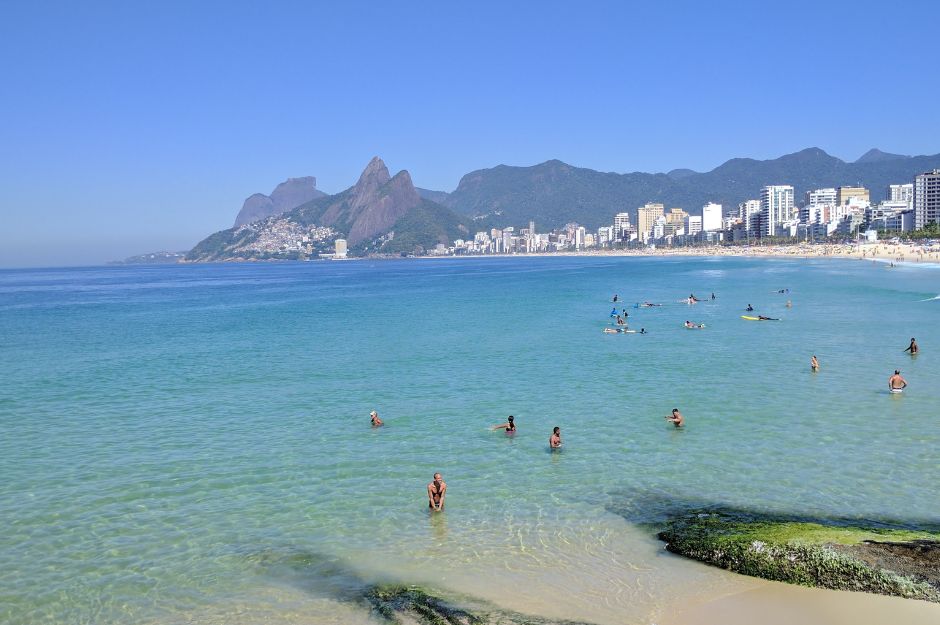
So, is Rio de Janeiro safe for tourists? The answer is a resounding YES. I always feel like many people compare Rio to the movie The Purge, where rules don’t exist, and everyone is running around with guns and shooting at each other.
But that’s far from the truth. Most tourists who visit Rio have a great time and don’t run into trouble. Most of the time, in terms of crime, tourists may encounter petty theft. Your cell phone might be snatched from your hand, for example. Although violent crimes do happen, they aren’t common.
So, the key to staying safe is simply about being aware and careful. But don’t worry, I’ve got you covered. Let’s talk about what you can do to ease your mind, stay safe and have an amazing time in the Cidade Maravilhosa (marvelous city).
10 Rio Travel Safety Tips
Is it safe to travel to Rio de Janeiro Brazil? In this next section, I’ll outline everything that you can to keep yourself safe when you come to Rio. Let’s outline the dangers in Rio de Janeiro, so you know exactly what to do
1. Getting Around in Rio
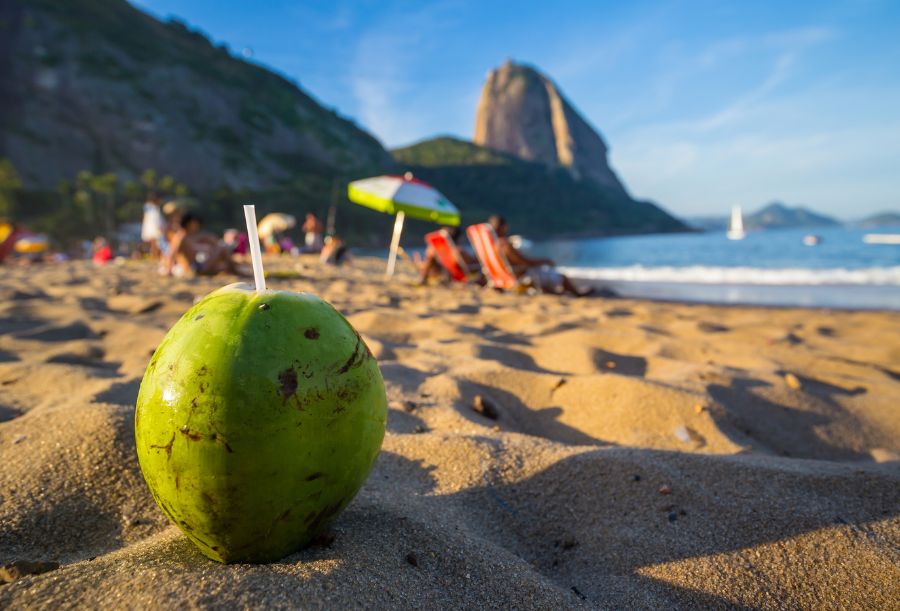
There are a couple of ways that you can get around in Rio de Janeiro: walking, public transportation, taxi/UBER, and organized tour. If you plan on taking a taxi, make sure the markings are correct. If you want to be sure that you are taking a licensed taxi, you can also download the 99taxi application.
Is UBER safe in Rio? I actually recommend taking an UBER, which is what I use. When calling a ride, always check the license plate of the car before getting in. Sometimes the driver will ask you if you have a preferred route; tell him (or her) that you’d rather have him stick to the main streets instead of the back roads. Also, I recommend always upgrading to a Uber Comfort or Uber Black for better cars and service.
⭐️ My story: I once ordered a regular UBER car, and the most rundown car pulled up to my hotel. I was nervous getting in. The license plate matched, but from then on, for longer drives, I always opt for a black.
Another option is the bus, and I would only recommend that if you really know where you are going. Bus routes can be confusing and chaotic. Although I do recommend the metro. It’s clean and organized. They even have women-only cars for peak hours.
Now walking. Is it safe to walk in Rio de Janeiro? Yes! Just as long as you stick to the main areas. I love walking on the boardwalk — just always be cautious and aware of your surroundings.
2. Be Careful on the Beach
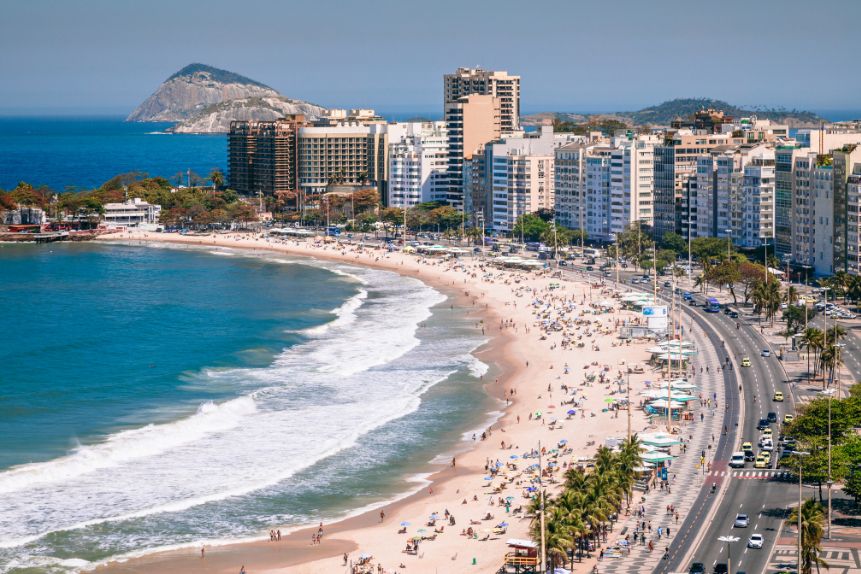
Rio’s beaches are stunning, but they are a hotbed for criminal activity. If you take your eyes off your things for just one minute, they can disappear. Just. Like. That.
The robbers on Copacabana and Ipanema are pros, so don’t think that you can outsmart them. Bring only what you need to the beach, and always keep an eye on your belongings. Never (and I mean NEVER) leave anything unattended on the beach.
Another thing that often does happen, especially on the boardwalk, is snatch and grabs. You’ll be filming yourself on the beach or taking a picture, and someone on a bike will ride by and grab your phone from your hand.
It is a problem. However, the city has responded to these problems by increasing police presence in the more popular tourism areas of Copacabana, Arpoador, and Ipanema.
3. Leave the Flashy Jewelry At Home
Expensive jewelry attacks prying eyes, so leave that beautiful diamond ring at home. I would also recommend that you don’t bring any gold chains or any hanging earrings.
As I mentioned before, the most common type of theft is petty theft — usually quick and fast. Snatch and grabs are not only common for things like phones but also for gold chains. So leave all those flashy things at home.
4. Pickpocketing is a Thing
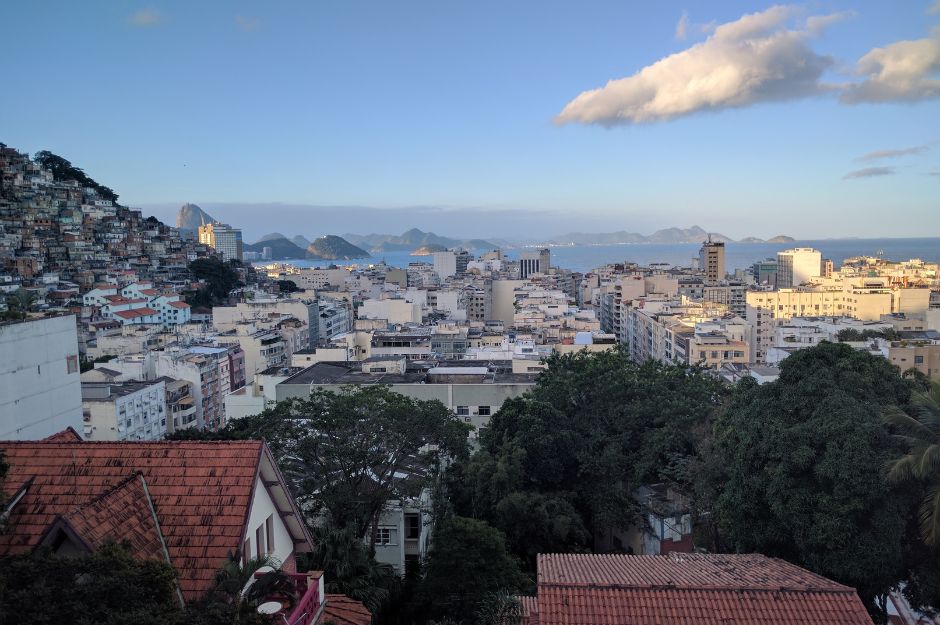
I was never really robbed in Rio, but someone did come very close to walking off with my phone. I was on the bus, and since I always check my phone, I had put it in the front (unzipped) pocket of my purse — bad idea.
I was standing, and I noticed that a man was standing REALLY close to me. He was moving around, but I didn’t think anything of it. The bus stopped, and he got off. It was then I realized that I didn’t have my phone.
Then I did something pretty stupid. I got off the bus and followed him. At the time, I had a Nexus phone, which wasn’t too popular in Brazil. The would-be robber saw that I was following him and then stopped, bent down to “pick” something off the ground, and turned to me. With my phone in his hand, he asked is this your phone? As if it had just fallen to the ground. I guess he felt it wasn’t worth the hassle.
This story is just to show that pickpocketing can (and does) happen. I actually LOVE walking around with my Travelon bag, it’s made with travel safety in mind, and it gives me peace of mind.
5. Not All Favelas are Created Equal
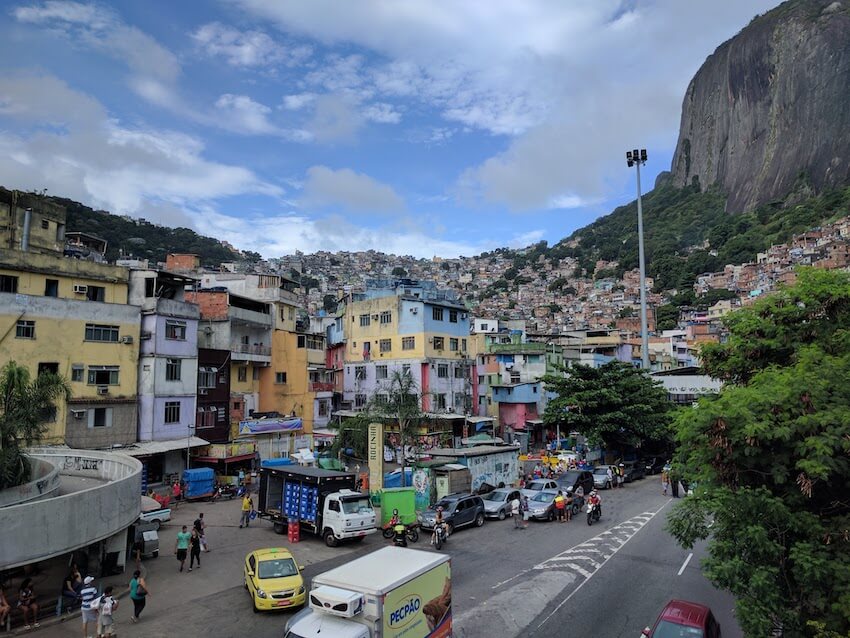
Favela’s can be a scary place, especially if you are in the wrong one at the wrong time. But that doesn’t mean you should never enter into a favela (remember, there are over 1000 favelas in Rio).
Favelas are vibrant communities filled with friendly people, gorgeous views, interesting shops/restaurants, and inspiring local initiatives. There are some favelas, like Vidigal, that you can enter without a guide.
There are numerous incredibly interesting tours and projects that you can visit in many of the favelas, like taking a tour through Santa Marta, enjoying a tour in the largest favela in South America: Rocinha, and/or visit Vidigal and hike up the Two Brothers Mountain. My only advice is to book tours with locals (so that all money is invested back into the community) and avoid the Jeep “zoo-type” tours.
6. Watch out for the nightlife
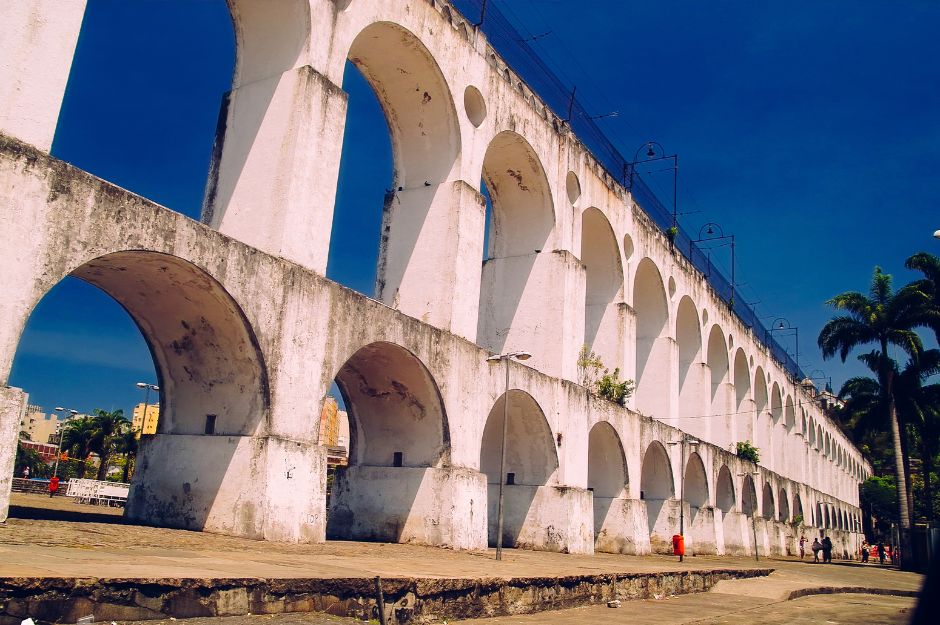
Is Rio dangerous for tourists in the nighttime? Once the sun goes down and the drinks start getting stronger, the game is played a little differently. So is Rio safe at night? Not really.
A friend of mine went out in Lapa, where he and his friend got pretty tipsy. They exited the bar at around 2 am and walked a couple of steps before two women came up to them and began to flirt. They loved the attention as the girls touched their arms before suddenly walking away and getting into a cab. My friend put his hand in his pocket, and voila, his phone was gone.
Once you start getting tipsy, especially in places like Lapa, make sure to stay in crowded areas and be very wary of pickpockets. Also, avoid flashing large amounts of cash and try to avoid taking out money from ATMs (it’s always safer to take out money at bank locations during opening hours).
Do not wander too far and instead call an UBER or ask the bar/restaurant to call you a cab that will pick you up from your location. If you plan on drinking at one of the beach kiosks, make sure to avoid getting the gringo price. Always ask the price before ordering the drink, or you’ll end up with a R$18 caipirinha like me. Finally, AVOID walking drunk and/or by yourself on the beach sidewalks in the early hours or down dark streets.
7. Be Careful With Your Credit Card

Ahh, the credit card scam. I’ve never had my credit card cloned as many times as I have in Rio de Janeiro. I remember I left Rio for a couple of months, and suddenly out of nowhere, around CAD$10,000 dollars were charged to my credit card.
There are ways to avoid this, like never swiping your card in dodgy establishments, always checking if the ATMs have been tampered with, and always covering your hand when punching in your pin. I tend to always use ATMs inside recognized banks, and I try to avoid outdoor ATMs.
I always recommend bringing 2-3 credit cards, and always leave an extra card in your accommodation (safely hidden), just in case. Sometimes cards might not work in specific establishments, so it’s always best to always have some REAIS with you.
⚠️ Taking out money for me has always been a hassle with my foreign credit card. I often have to go to several banks to see if they will allow it, so be aware of that.
8. Be Careful in Centro

The center has some of the best restaurants, markets, stores, and parties in Rio de Janeiro. On Monday, there is a party at Pedra do Sal, the birthplace of Samba, and on Fridays, the place to be is in Lapa. The center is a fun place to go, but I would recommend against wandering around by yourself and always be wary of your surroundings.
⭐️ My story: One night at Lapa, we ordered an UBER. The driver refused to stop at any of the red lights for fear of getting robbed. My friend opted to take the metro and then decided to walk to Lapa. It was already dark outside. She was followed by someone. At one point, she turned around and screamed at the person to go away. Thankfully nothing happened. NEVER wander around at dark in Rio, especially in Centro.
9. Don’t Be Afraid to Ask for Help
Brazilians are some of the most friendly and helpful people — if they can help, they probably will. If you are feeling afraid or just lost, duck into a store. Walk up to an employee and ask for help, whether that is for directions or if you need help in some other way.
10. Lighten up on that death grip
The easiest way to spot someone who has a lot to lose is a person who is anxiously clutching their bag and/or purse. I remember a Chilean once taught me this. He said he never was robbed because he made sure that it seemed like he didn’t have anything important on him.
I have to say mastering this nonchalant attitude when I know that I have a computer, camera, or iPhone in my bag took some practice. One of the things I did, was to buy Travelon travel safety purses (a big and small one) that come with extra features like slash-proof handles and locks that give me that sense of security without having to police my bag 24-7.
My last pieces of advice?

Remember, Rio is generally safe — as long as you follow these safety precautions, you shouldn’t have any problems. Try to stay on the southern side of the city (Zona Sul) unless on a guided tour. Travel in groups if you can. Walk with a purpose, even if you are completely lost. If you are lost, duck into a store to check the map. Never ask a stranger back to your hotel room. And if someone spills something on you, do not let them clean it. This is a common ruse to steal your wallet.
You should also try to learn some Portuguese words or phrases as the locals will appreciate the effort. And finally, know where you are going and how to get there before leaving for your destination. And if you are hiking, make sure to bring all the essentials (and go on a tour if you aren’t too sure how to get to the top).
Safety in Rio: Frequently Ask Questions
Ready for some Rio safety tips? Wondering what is the Rio de Janeiro crime rate? According to Agencia Brasil, in 2022, the Rio crime rate decreased by around 18%. Again, this doesn’t mean that Rio is 100% safe, but if you stick to the tourist areas and follow my tips, you shouldn’t have a problem.
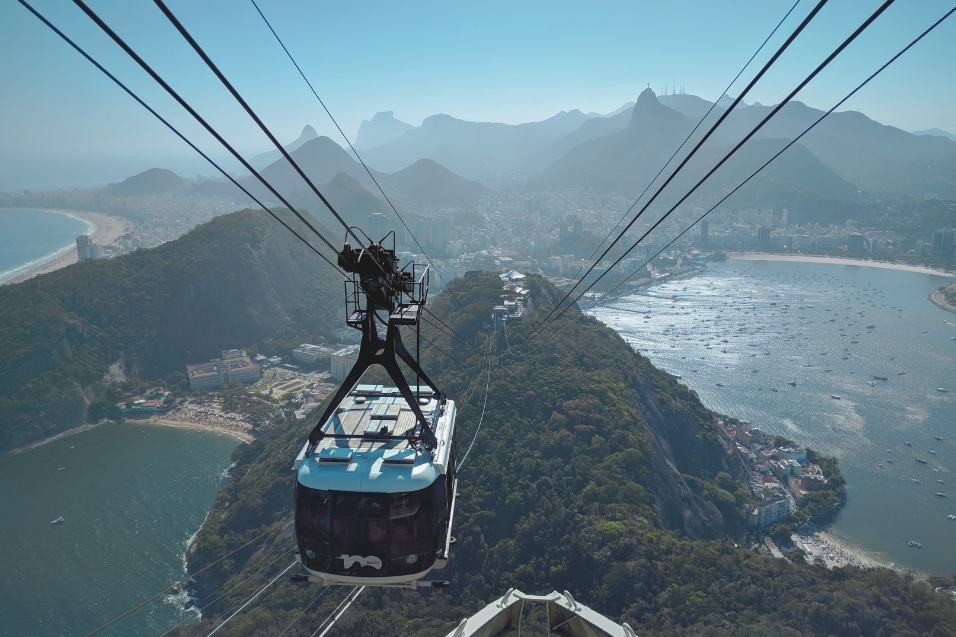
Is Rio de Janeiro safe for female tourists?
YES — Rio de Janeiro is generally safe for female tourists, but like any large city, it’s advisable to take basic safety precautions. It’s best to stay in populated, well-lit areas, particularly at night, and to keep personal belongings secure and close to your person.
I was a single female in Rio for a long time, and I never was harassed, followed, or felt unsafe around men. I am not saying this doesn’t happen, but I felt safer as a solo woman in Rio than I did in Paris and in Brussels.
In the end, don’t forget Rio is a vibrant city full of welcoming locals, so don’t let safety concerns overshadow your experience
Is Santa Teresa safe?
Characterized by its bohemian atmosphere and colonial architecture, Santa Teresa can be a safe area if you stick to the main area. The neighborhood is surrounded by favelas, and the roads leading up can be challenging to navigate. If you’re using Uber or a private car, ensure you have a reliable map.
Alternatively, consider taking the yellow tram or a moto-taxi, which are popular means of transport to reach the top.

Is Airbnb safe in Rio de Janeiro?
Staying in an Airbnb in Rio de Janeiro can be a safe and enjoyable experience. As with any booking, check the ratings and reviews of the property and aim to select a well-reviewed host in a reputable neighborhood.
Communication with your host can provide a wealth of local knowledge, further enhancing the safety of your stay. I actually stayed in multiple Airbnbs in Rio de Janeiro, including one that I lived in for 4 months in 2017.
Is it safe to travel to Rio de Janeiro alone?
Yes — it is safe to travel to Rio de Janeiro alone, provided you remain vigilant and mindful of your surroundings. Make sure to stay in well-populated areas, keep an eye on your belongings, and maintain a general awareness of your surroundings. Embrace the local culture, and don’t hesitate to ask for help if you need it.
Is Rio safe for Americans?
Is Rio de Janeiro safe for American tourists? YES — Rio is generally safe for Americans, as it is for most tourists. Like any city, it’s important to stay aware of your surroundings, especially in crowded areas, and follow general travel safety advice
Is Rio safe for families?
Rio de Janeiro can provide a safe and exciting experience for families, especially if you decide to stay in the South Zone, or Zona Sul. This area boasts family-friendly attractions and beautiful beaches. As in any city, always keep an eye on your children and belongings, and exercise common travel safety precautions
Why is there so much crime in Rio de Janeiro?
The crime rate in Rio de Janeiro, like many large cities, is a product of various complex social issues. While crime in Rio is higher in areas of socio-economic disadvantage, it’s important for tourists to remember that most criminal activities are localized away from major tourist attractions. Typically, these tourist hotspots are better policed, providing a safer environment for visitors to enjoy the vibrant culture and beauty of the city.
How Safe is Rio de Janeiro: Final Thoughts

So is Rio de Janeiro safe? Brazil Rio is a city filled with vibrancy and culture that continues to draw in digital nomads and travelers from around the globe. But remember that if you do come to Rio, you should always purchase travel insurance, I’ve hard World Nomads is pretty good.
While you still may question, how dangerous is Rio de Janeiro? It’s essential to remember that, like any large city, it’s not devoid of risks. The dangers of Rio de Janeiro are often highlighted, but by taking sensible precautions, Rio de Janeiro safety can be effectively managed, allowing for a truly unforgettable travel experience. Safe travel!